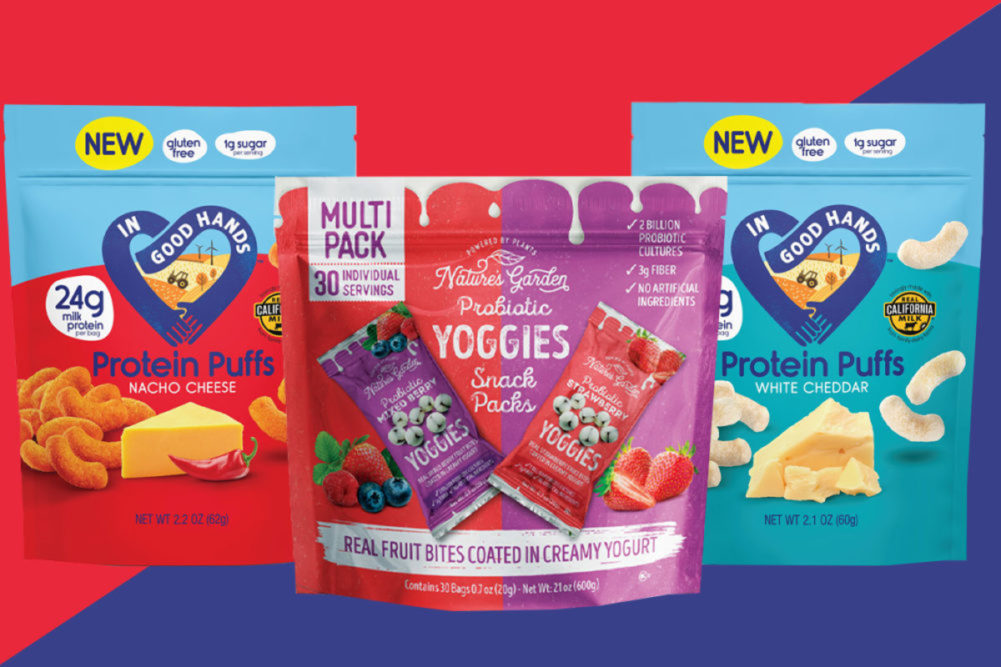CHICAGO — Consumers want healthy, indulgent, convenient and less expensive. Advocates for the dairy industry see dairy ingredients fulfilling those desires and much more.
“Dairy consumption is hot,” said Michael Dykes, president and chief executive officer, International Dairy Foods Association (IDFA), Washington, at Dairy Forum 2024 in Phoenix. “We’ve had a record year. We’re simply eating more of our dairy than we are drinking.”
Sometimes dairy ingredient usage is obvious, such as in a scoop of ice cream or a cup of yogurt. Other times it’s a characterizing component of a prepared food, such as melted cheese on pizza or a bowl of creamy mushroom soup. And then there are the foods and beverages where dairy plays behind the scenes as one of many ingredients.
Dairy ingredients range from basic dried forms to enzyme-modified concentrates. Select dairy ingredients add nutrition to formulations while others contribute functionality. Some provide dairy flavor and mouthfeel, with others delivering creamy dairy color.
“I look at dairy as an ingredient,” said Patricia Stroup, senior vice president and chief procurement officer, Nestle SA, Vevey, Switzerland. “I rarely look at it as an end product. (I’m always asking), where can dairy fit?”
Dykes cited a comment he made six years ago at Dairy Forum and praised the industry for bringing it to fruition.
“(In 2018, I said,) ‘We will move beyond the jug,’” he said. “Innovation will take us to new places. Yes, we’ll continue to have the jug of milk. Yes, we’ll continue to make the historical traditional products, but we’ll find new opportunities in fractions of milk in the ingredients. We’ll find ingredients we didn’t know. They’ll have benefits we didn’t know about.’
“Today we are bypassing some of those intermediate steps and we’re going from the milk straight to the fractions.”
The American Dairy Products Institute (ADPI), Elmhurst, Ill., sets standards for such ingredients to ensure quality and integrity. For example, ADPI recently published standards for two new dairy ingredients in late 2023.
The edible acid casein standard supports the ongoing reemergence of domestic production for the ingredient, which until recently was dominated by international manufacturers, said Andy Powers, vice president of technical services at ADPI. The infant formula grade whey protein phospholipid concentrate standard sets a high bar for safe and effective ingredients for use in infant formula, one of the most critical applications for dairy ingredients.
Miles Hurrell, chief executive officer of Fonterra Cooperative Group Ltd., Aukland, New Zealand, agreed at Dairy Forum that the future of dairy is as ingredients. But to make that become reality, he said the industry needs to do a better job of telling the story of milk’s macro and micronutrients.
“The increasing popularity of dairy protein demonstrates how consumers are making changes on the back of growing awareness of how certain ingredients can aid in managing diverse health concerns,” said Rebecca Cuthbertson, head of marketing – advanced nutrition for Nutiani, a Fonterra nutrition brand.
Doing a better job of communicating dairy’s healthful halo is a priority for IDFA, Dykes said. He believes dairy will have a prominent role in the food as medicine movement.
Innovating with dairy ingredients
While nutritional foods, such as infant formula, are one of the largest outlets for dairy ingredients, familiar everyday foods benefit from them, too. In Good Hands, Visalia, Calif., for example, developed protein puffs in nacho and white cheddar varieties. The cheese powder that seasons the puffs is a characterizing dairy ingredient. But it’s the use of milk protein isolate combined with rice starch to make the puff that distinguishes the new snack food.
In Good Hands Protein Puffs feature 12 grams of milk protein, are gluten-free and have 1 gram of sugar and 130 calories per serving. The development team spent several years developing its process to create the high-protein puff with an optimal crunchy texture and cheese flavor.
The secret ingredient for Heavenly Waffles LLC, Omaha, Neb., a manufacturer of shelf-stable dry waffle mixes, is dried yogurt. The yogurt provides flavor and protein, with the latter contributing to a light and fluffy texture when prepared following on-pack instructions.
Several new concepts rely on dairy and plant proteins. Lenny & Larry’s, Los Angeles, has The Boss! line of nutrition bars and cookies. The cookies rely on a protein blend of hydrolyzed milk protein isolate, milk protein isolate and wheat protein isolate, while The Boss! Immunity Bar includes a blend of milk protein isolate and wheat protein isolate in the bar with additional milk protein isolate delivered through the bar’s chocolate coating.
Nestle launched Milk & Soya in Central and West Africa at the end of 2023 in efforts to improve diet quality in the region. It is an instant powder that may be hydrated and consumed as a beverage or used with cereal or in porridge. It was developed by Nestle researchers at the regional research and development center in Abidjan, Côte d’Ivoire.
“We continue to expand our offerings with nutritious, tasty, products that complement the everyday diet of children and their families,” said Laurent Alsteens, global category head for early childhood nutrition at Nestle. “Through combining the goodness of dairy and plant ingredients, we can deliver a new flavor experience together with nutritional benefits.”
Tesfalidet Haile, head of the center, said, “We used our local expertise in cereals and dairy innovation to combine milk powder with a plant-based ingredient, while ensuring that the product had a good taste, texture and solid nutritional credentials. This combined with the use of locally sourced soy enabled us to deliver a nutritious and affordable milk and plant-based beverage with sustainability benefits.”

